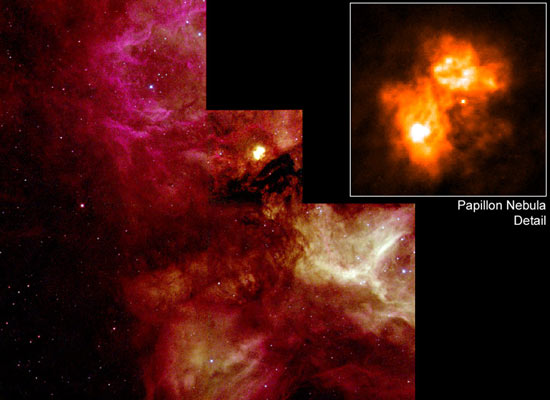
|
Explanation: In a search for massive stars, the Hubble Space Telescope has peered into yet another spectacular region of star formation. This nebula, known as N159, spans over 150 light-years and is located in the neighboring Large Magellanic Cloud galaxy, about 170,000 light years distant. Visible in the above picture are bright newborn stars, dark filaments of dust, and red-glowing hydrogen gas. The aptly named Papillon Nebula (French for butterfly), is the unusual central compact cloud, highlighted in the inset. Reasons for the bipolar shape of the Papillon Nebula are currently unknown, but might indicate the presence of unseen high-mass stars and a thick gaseous disk.
|
January February March April May June July August September October November December |
| ||||||||||||||||||||||||||||||||||||||||||||||||
NASA Web Site Statements, Warnings, and Disclaimers
NASA Official: Jay Norris. Specific rights apply.
A service of: LHEA at NASA / GSFC
& Michigan Tech. U.
Based on Astronomy Picture
Of the Day
Publications with keywords: nebula - LMC - starbirth - absorption nebula
Publications with words: nebula - LMC - starbirth - absorption nebula
See also:
- APOD: 2026 January 19 Á CTB 1: The Medulla Nebula
- APOD: 2025 October 26 Á Halloween and the Ghost Head Nebula
- APOD: 2025 March 18 Á LDN 1235: The Shark Nebula
- APOD: 2024 June 11 Á Colorful Stars and Clouds near Rho Ophiuchi
- The Tarantula Zone
- APOD: 2024 January 23 Á Deep Nebulas: From Seagull to California
- The Large Cloud of Magellan
